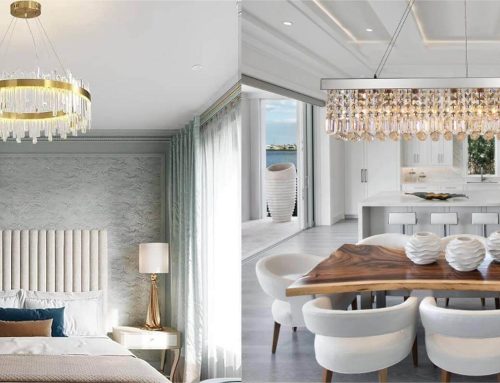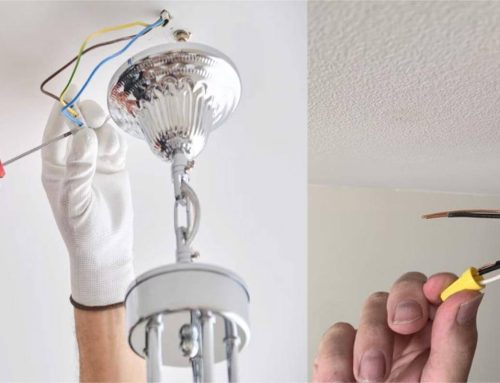Chandelier is a large piece of home decoration, to consider durability, the general life of the home chandelier needs to be more than 20 years. Want to be durable, the material is preferred on brass, aluminum alloy, zinc alloy, carbon steel and other metal materials. Choosing a chandelier can not only look at the style, lamp body material, surface treatment, quality process, light source color temperature, power size, size specifications, installation height, ceiling strength should pay attention to! Here we teach you how to buy chandeliers from the perspective of chandelier manufacturers.
If you decide you need a new chandelier. What now? Read this helpful article for some tips to keep in mind when buying a chandelier. Please read this chandelier purchase guide.
1. Style of chandelier
The main reason to buy chandeliers is because they are beautiful. This means that for most customers considering chandeliers, style is the primary consideration. In addition to finding a chandelier that you think is beautiful, you also need a chandelier that fits the style of your space. If most of your rooms are minimalist in style, a delicate crystal chandelier that looks great in pictures may feel out of place once it’s hung in your home.
There are chandeliers with a more low-key look, chandeliers with a modern feel, and even antler chandeliers for those who want to add character to a rustic space. Chandeliers don’t have to contain sparkling crystals to be elegant and elegant, and you have a variety of styles to choose from – there is always a chandelier to suit every taste.
Here are some common chandelier styles for your reference:
- Modern style
Modern chandeliers usually use simple lines and geometric shapes design, bright colors, and simple structure. Suitable for modern simple style interior decoration.

- Classical style
Classical chandeliers often use gorgeous carving and decoration, soft lines, and a strong atmosphere. Suitable for European style, court, and other classical-style rooms.

- Nordic style
Nordic chandeliers focus on a simple and fresh design style, usually using wood or simple metal materials, and simple colors. Suitable for the original wood color, fresh tones of Nordic style decoration.

- Industrial style
Industrial-style chandeliers tend to have metal texture and simple design, showing simple, solid characteristics, suitable for concrete walls, open space, and other industrial-style decorations.

- Garden style
Garden-style chandelier often uses flowers, leaves, and other natural elements, and soft colors, giving people a warm and comfortable feeling. Suitable for gardens, country, French country, and other styles of decoration.

(Another related post: Types of Chandelier: What’s the Best Option for You?)
2. 8 useful tips to consider when buying a chandelier
Chandeliers are widely considered to be one of the most elegant and sophisticated interior decorations an individual can add to their property. Whether it’s a new addition to your bedroom, dining room, living room, or kitchen, you can be sure that a chandelier will add a bit of drama and become a focal point.
Currently, there are thousands of options on the market, each available in a variety of shapes, sizes, and styles. With so many options out there, choosing the one that’s right for you can be overwhelming.
Although it’s an exciting endeavor, it’s best not to immediately buy the first chandelier you see. Instead, we provide you with some helpful tips that you should consider when buying a chandelier to ensure you get the chandelier of your dreams.
1) Determine your budget
Since we’re on the subject of purchasing, it’s best to first determine how much you’re willing to spend. Chandeliers come in many shapes and sizes and, as you might expect, at various prices.
If you have set a low budget for yourself, it may be a good idea to filter out any options that are not within the price range you set. In fact, we’ve made it easier for our customers by adding filtering capabilities to help them search for our range of pendant lights.
It’s worth noting that choosing a cheaper option doesn’t always mean your chandelier will be smaller or less stylish. Or, if you’ve gone above and beyond and set yourself a larger budget. You’ll have a larger collection to choose from. You can expect that the larger your budget, the more flexibility you will have in choosing a chandelier.
2) Consider room space
While it’s great that you have the funds to purchase a chandelier, do you have enough space? When you choose a chandelier, it is important to keep in mind the space you need to use it.
Think about it. If the room is too small and you buy a chandelier that is too big, you’re going to have some space issues. It is important to measure the size of the room and keep the dimensions in mind when making your final decision. Even better, you have the option of talking to an expert who is willing to help you make sure you get the correct measurements.
3) Think about your design theme
Before deciding on a chandelier, it is a good idea to think about the theme you want the room to have. You can now buy chandeliers in many different designs – traditional, modern, modern, and more.
The theme of your room should have a big impact on your decision, and it’s easy to see why. If you’re planning on going with a fresh, modern theme. It’s unlikely that you’ll want to purchase a chandelier of traditional design.
Chandeliers are suitable for almost any room, depending on the overall style of space you want. There are plenty of mini chandeliers on the market to choose from, and hanging a chandelier in a bathroom is even an option for a chandelier rated for a wet or damp location.
But you have to be careful to choose the right chandelier for the right space. If you can fit it in the bathroom, a full-size chandelier might look ridiculous. A mini-chandelier on the dining table only makes sense if your table and dining room are smaller in size, or if you decide to hang multiple mini-chandeliers in the space.
To determine which chandelier is right for the particular room you have in mind, consider these three factors:
- The style of the room – does the color and design of the chandelier you are considering match the overall space?
- Amount of lighting required – The biggest appeal of chandeliers is that they are beautiful, but they also have a practical purpose. Do you need a chandelier to block out a lot of light, or can it simply add a little ambient light to the environment?
- The size of the room – the huge chandelier in the small room is too much, plain and simple. On the other hand, a mini chandelier won’t do much for a larger space like a living room. Make sure the chandelier is the right size for the available space.
While these factors will slightly limit your options, don’t worry – even limited by style, size, and the amount of light emitted, you still have plenty of chandeliers to choose from.
4) Chandelier materials and finishes
Chandeliers are now designed in a variety of materials. You may come across chandeliers designed using materials such as brass, metal, crystal, and iron.
Remember to consider how the chandelier will blend with other aspects of the room. Think about how the chandelier’s materials and colors will contrast with your current furniture, wallpaper, and windows. It’s even important to try to create consistency with other lighting fixtures in the room.
(Another related post: A Quick Guide for Chandelier Load Testing)
5) Ceiling height
We’ve briefly mentioned the space of the room, but it’s also important to consider the height of the ceiling. The height of the room is an important factor in deciding on a chandelier. Rooms with high ceilings are ideal for chandeliers that hang low and hang from the ceiling.
As you might imagine, rooms with low ceilings are not suitable for this type of chandelier. It’s also important to consider the light entering the room. You’ll want to make sure those chandeliers with crystal or bare bulbs are mounted higher to avoid glare or bad reflections.
6) Long-term maintenance
When you choose a chandelier, it is important to consider how it will maintain its quality over time. After installation, it is important to clean your chandelier regularly to prolong its high quality. Like most decorative furniture, chandeliers can collect a lot of dust.
Larger and more intricately designed chandeliers will obviously collect more dust and be more difficult to clean. If you are unable to clean a larger chandelier regularly, it is better to choose a smaller chandelier or one with a simpler design. There is no point in spending hundreds of pounds on a chandelier if you are never going to clean it.
On the other hand, you may choose to contact a chandelier maintenance specialist who will come to your home regularly to clean your chandelier.
7) Chandelier size
Remember, chandeliers are not “one size fits all.”
Before you take the step of buying a chandelier, it is important to know the dimensions of the space where you plan to place your chandelier. First measure the height of the ceiling. One suggestion is to choose a chandelier with a height of three inches per foot of space. This doesn’t have to be seen as a hard and fast rule, but it can provide a standard for your search.
You also need to consider the width. If you hang it in your living room or bedroom, you have the flexibility to use it, but you may still want it to be less than a third of the width of the room. If you plan to hang it over the dining table. You should make sure that the chandelier is smaller than the width of the table.
Keep in mind the height of your family when determining the height to hang from. If it’s too low, people’s heads could hit it – there should be plenty of space between people’s heads and the lowest point of the chandelier. If you hang it up high, it can be a pain to clean it and change the bulb.
Chandeliers are usually heavy compared to most lighting fixtures. If you buy a heavy chandelier, this will affect your shipping costs. For example, the supplier needs a bigger and stronger carton to transport your heavy chandelier. This carton needs to be customized by a carton box machine. Correspondingly, the shipping cost will also increase. Also, the tricky of installation, and the risks of trying to install it yourself will be increased. No one wants to be in the wrong place when an improperly installed chandelier falls from the ceiling. So be aware of the other problems that come with buying these gorgeous fixtures.
8) Lighting power of the chandelier
The lighting power of the chandelier is usually determined by the wattage of the bulb. In general, large spaces such as living rooms and dining rooms require high lighting power to ensure adequate lighting. For these rooms, the choice of 100-watt to 300-watt chandelier is very appropriate. If you have a large room or a dark interior, you may need higher lighting power.
For small spaces such as bedrooms and study rooms, usually, only 40 watts to 100 watts of chandeliers can meet the lighting needs. However, if you need to carry out specific activities in these rooms, such as reading, writing, etc. You will need to adjust the lighting power according to the actual needs.
When you choose a chandelier, you also need to consider the overall home lighting layout and other lighting equipment. If your room already has other lighting equipment, such as wall lamps, desk lamps, etc. You can choose the appropriate chandelier lighting power according to the lighting power of these devices to achieve the best overall lighting effect.
(Another related post: Chandelier 101: All You Need to Know)
3. FAQs about buying a chandelier
Here are some of the more common questions:
1) What is the function of a chandelier?
The light of the chandelier will directly shine on some household utensils in your home that need to be emphasized. It can highlight the subjective aesthetic effect, thereby achieving an artistic effect of a unique environment and rich atmosphere.
Moreover, the service life of chandeliers is generally very long, and the overall quality is also good. Its function is to improve the indoor environment, meet the needs of the required scene, decorate the indoor space, beautify it, and also play the role of dividing the visual space.
2) How much does it cost to buy a chandelier?
Don’t assume you’re going to be overpriced before you start looking. Particularly large and elaborate chandeliers can cost thousands of dollars. But there are many lovely chandeliers on the market priced between $100 and $250.
Still, the cost of buying a chandelier is often more complicated than the list price. Chandeliers can be very heavy, so if you’re buying a chandelier online. You’ll have to consider how much shipping you’ll need to add to your order. If you are hiring a professional to install the chandelier (which may be a smart move for all but the most skilled DIY enthusiasts). Then you should also consider the cost of installation.
Most of the increased costs are related to whatever type of lighting you use. So if you like the idea of a chandelier but balk at it due to cost. Please keep in mind that you may have to pay for any type of installation for the one lamp you purchase might as well choose the one you want.
3) How should I choose the lighting power of the chandelier?
The functionality of a chandelier is closely related to the power of lighting, which is measured in watts (how much energy the chandelier consumes) and lumens (the amount of light the chandelier emits).
These values must take into account the size of the room and its brightness. And the atmosphere you want to achieve (whether you want daylight or soft lighting for a soft ambiance).
4) What size should your chandelier be?
When it comes to choosing the right chandelier size, it’s a very simple matter. You only need to do simple calculations to find out.
Here’s the formula: Add the (L) length and (W) width of the room, then convert the total to inches.
For example, if your room measures 20′ x 15′, which is 35′, the best diameter for a chandelier would be 35 inches.
5) How high should the chandelier be hung?
Here are the most common uses:
Living room or dining room: It is usually recommended to hang the chandelier at a height of about 2.1-2.4 meters above the ground. This can ensure sufficient head space and be able to illuminate the entire area.
A chandelier above the dining table: If you install the chandelier above the dining table. You can consider hanging it at a height of about 75-90 cm from the dining table surface. Because it can effectively illuminate the dining table without obstructing the view.
Entrance hall or staircase: For higher ceiling spaces, you can choose to hang the chandelier at a lower height to create a more welcoming and unique atmosphere. However, it is necessary to ensure that the light fixtures do not impede the passage of pedestrians.
Tip: The above scenarios are only partial references. Postmodernlighting recommends that you consult a professional lighting installer before installation.
6) How big should a chandelier be in a dining room?
The size of your dining room chandelier should be determined by the diameter and height of your dining table. The number of bulbs may also affect size. I recommend a chandelier diameter of 1/2 to 2/3 the width of the dining table. Nowadays, most restaurant chandeliers are generally four to six lamps with a diameter of about 30 inches, These chandeliers can be used as a reference size for your purchase.
You should also consider ceiling height and chandelier height before purchasing. The chandelier should hang approximately 32 – 38 inches from the top of the table to the bottom of the fixture.
(Another related post: Top 10 Chandelier Manufacturers In China 2023)
4. Conclusion
I hope the above guide to buying chandeliers will help you. And I hope you can find the chandelier you want to add luster to your home! If you have any other questions, please continue to consult.






Leave A Comment